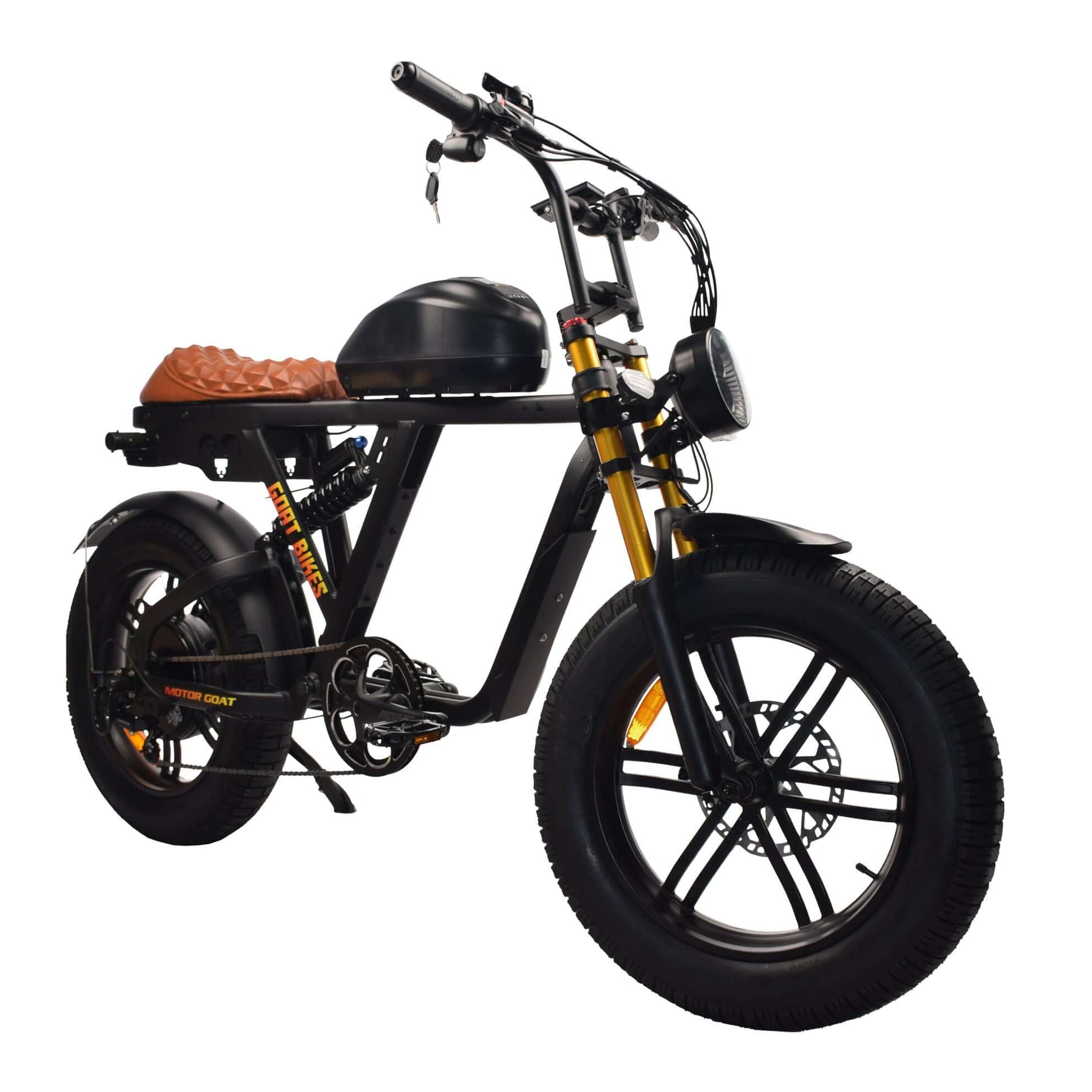Electric bikes rely on their batteries to deliver power and performance on every ride. A well-cared-for battery not only extends your e-bike’s range but also saves you money by reducing the need for early replacements. In this in-depth guide, we explore practical strategies and expert tips to help you get the most out of your e-bike’s battery, keeping your ride smooth, efficient, and reliable.
Understanding Your E-Bike Battery
Most modern e-bikes are powered by lithium-ion batteries, known for their high energy density, relatively low weight, and long lifespan. However, like any rechargeable battery, lithium-ion packs require proper care to maintain performance. Factors such as charging habits, storage temperatures, usage frequency, and how aggressively you ride can all impact the long-term health of your e-bike battery.
Key Components of an E-Bike Battery System
-
Battery Pack: Houses the lithium-ion cells, typically rated by voltage (V) and amp-hours (Ah).
-
Battery Management System (BMS): Protects the battery from overcharging, overheating, and excessive discharging.
-
Charger: Must be compatible with the battery specs to ensure safe, efficient charging.
By understanding how these components work together, you can make better decisions about how to use and care for your battery.
Proper Charging Techniques
One of the most important aspects of battery care is how you charge it. Here are some essential charging practices that can help preserve battery capacity and prevent early degradation:
1. Avoid Overcharging
Once your battery hits 100%, unplug it. Leaving your e-bike plugged in for extended periods can overwork the cells and reduce longevity. If your charger or bike doesn’t have an automatic shutoff, consider setting a timer to disconnect it manually.
2. Partial Charging Is Healthier
Charging between 20% and 80% is ideal for long-term battery health. Avoid consistently letting your battery deplete to 0% or stay at 100% for too long, as both extremes put stress on the battery cells.
3. Use the Manufacturer-Recommended Charger
Always stick with the charger that came with your e-bike or one approved by the manufacturer. Incompatible chargers can deliver incorrect voltage or current, leading to damage or even safety hazards.
4. Monitor Charging Times
A full charge typically takes 4–8 hours depending on battery size. Leaving your battery plugged in overnight occasionally won’t ruin it, but making that a habit can shorten its lifespan. Smart chargers or external timers can help automate better routines.
Temperature and Storage Considerations
Temperature plays a huge role in lithium-ion battery performance. Extreme heat or cold can harm battery cells and reduce output or range.
1. Charge and Store at Room Temperature
The optimal temperature range for charging and storage is between 50°F and 77°F (10°C to 25°C). Avoid charging your battery in freezing or sweltering conditions.
2. Avoid Direct Sunlight and Rain
Direct sunlight can cause batteries to overheat, and water exposure can lead to corrosion. Keep your bike in a garage, shaded area, or indoors when not in use.
3. Long-Term Storage Best Practices
If you’re not riding for a while (e.g., winter months), store your battery at about 50–60% charge. Never leave it fully charged or completely drained for extended periods. Also, disconnect the battery from the bike to minimize phantom drain.
4. Use a Battery Cover
Battery covers can help protect against cold weather or moisture. If you regularly ride in rain or snow, consider investing in a weather-resistant battery case.
Riding Habits That Preserve Battery Health
Your riding style affects how much strain your battery undergoes. Adopting mindful habits can reduce wear and extend the number of full charge cycles you get from your pack.
1. Accelerate Gradually
Sudden, aggressive starts use more energy and stress the battery. Ease into acceleration, especially from a stop, to preserve both battery and motor health.
2. Use Lower Assist Levels When Possible
If your e-bike has adjustable pedal assist, stick with lower settings when you don’t need full power. The lower the setting, the less electricity is pulled from the battery.
3. Coast and Cruise
On flat stretches, let gravity and momentum do some of the work. Reduce your assist level or turn it off entirely when coasting downhill.
4. Keep Your Speed Moderate
The faster you ride, the harder your battery has to work. Moderate cruising speeds are more efficient and help you cover longer distances on a single charge.
5. Ride Consistently
Batteries degrade faster when unused for long periods. Even short weekly rides help keep your battery active and healthy.
Maintenance and Monitoring
Keeping tabs on your battery’s condition is vital for early problem detection and long-term performance.
1. Perform Visual Inspections
Check for cracks, swelling, or corrosion on the battery housing and connectors. Clean contact points gently with a soft brush or cloth if needed.
2. Update Firmware (If Available)
Some e-bike systems allow for firmware updates that can enhance battery efficiency. Always follow your manufacturer’s guidelines when applying updates.
3. Monitor Battery Health Using Apps or Displays
Many modern e-bikes include a digital readout or smartphone app that provides real-time battery diagnostics. Pay attention to battery temperature, voltage, and charge cycles.
4. Use Battery Management Tools
If your bike comes with a battery management system (BMS), use it. These systems balance charging across cells and alert you to potential issues.
Troubleshooting Common Battery Issues
Even well-maintained batteries can encounter issues. Here’s how to troubleshoot a few common problems:
Rapid Discharge
If your battery is draining faster than usual, check for:
-
Overuse of high-assist modes
-
Cold temperatures
-
Aged battery (typically over 500–800 cycles)
Reduced Range
A drop in ride distance might be caused by:
-
Tire pressure being too low
-
Motor or drivetrain drag
-
A battery nearing the end of its usable life
Sudden Shut-Offs
This could point to:
-
Loose connections
-
Internal battery fault
-
Voltage drops from cold temperatures or a damaged cell
When in doubt, consult your e-bike manufacturer or a certified technician before attempting repairs.
Final Thoughts
Maximizing your e-bike’s battery life isn’t about doing one big thing, it’s about consistently following a collection of small, smart habits. From avoiding overcharging to managing your assist levels and keeping an eye on temperature and storage, every detail counts.
A healthier battery doesn’t just last longer; it gives you more reliable performance and greater peace of mind on every ride. It also means you’re making fewer replacements, saving money, and reducing waste over time.
🔋 Want a powerful e-bike with premium battery performance? Explore our lineup of high-performance GOAT Power Bikes and shop our accessories to keep your battery in top shape.
Ride smarter. Ride longer. Ride GOAT.








